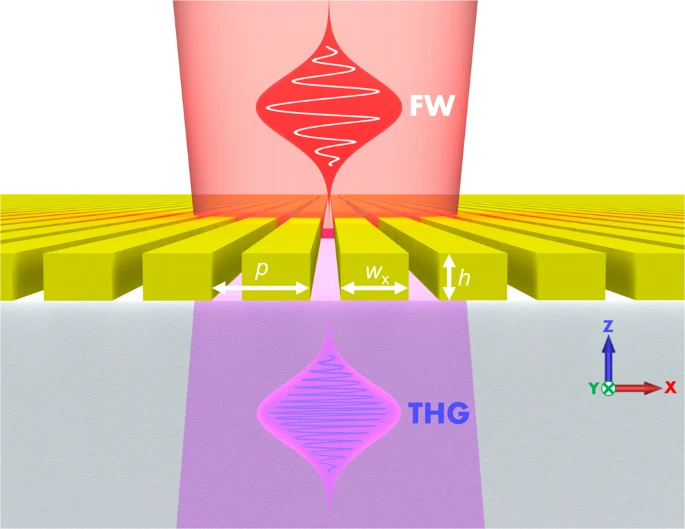Nanowerk October 5, 2021
Chalcogenide glasses have long been constrained to the near- and mid-infrared with respect to their applications in photonics because they strongly absorb wavelengths of light in the visible and ultraviolet parts of electromagnetic spectrum. An international team of researchers (USA – Duke University, US Naval Research Laboratory, industry, university of Pennsylvania, Aviation and Missile Center, Aviation and Missile Center, US Army, Italy) has experimentally demonstrated and reported near-infrared to ultraviolet frequency conversion in an As2S3-based metasurface, enabled by a phase locking mechanism between the pump and the inhomogeneous portion of the third harmonic signal. Due to the phase locking, the inhomogeneous component co-propagates with the pump pulse and encounters the same effective dispersion as the infrared pump, and thus experiences little or no absorption. This opens the previously unexploited spectral range for chalcogenide glass science and applications, despite the presence of strong material absorption in this range…read more. Open Access TECHNICAL ARTICLE

Third harmonic generation in the ultra-violet spectral range of As2S3. Credit: Nature Communications volume 12, Article number: 5833 (2021)